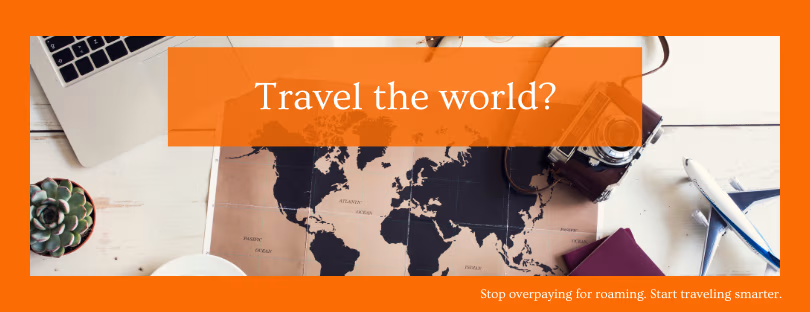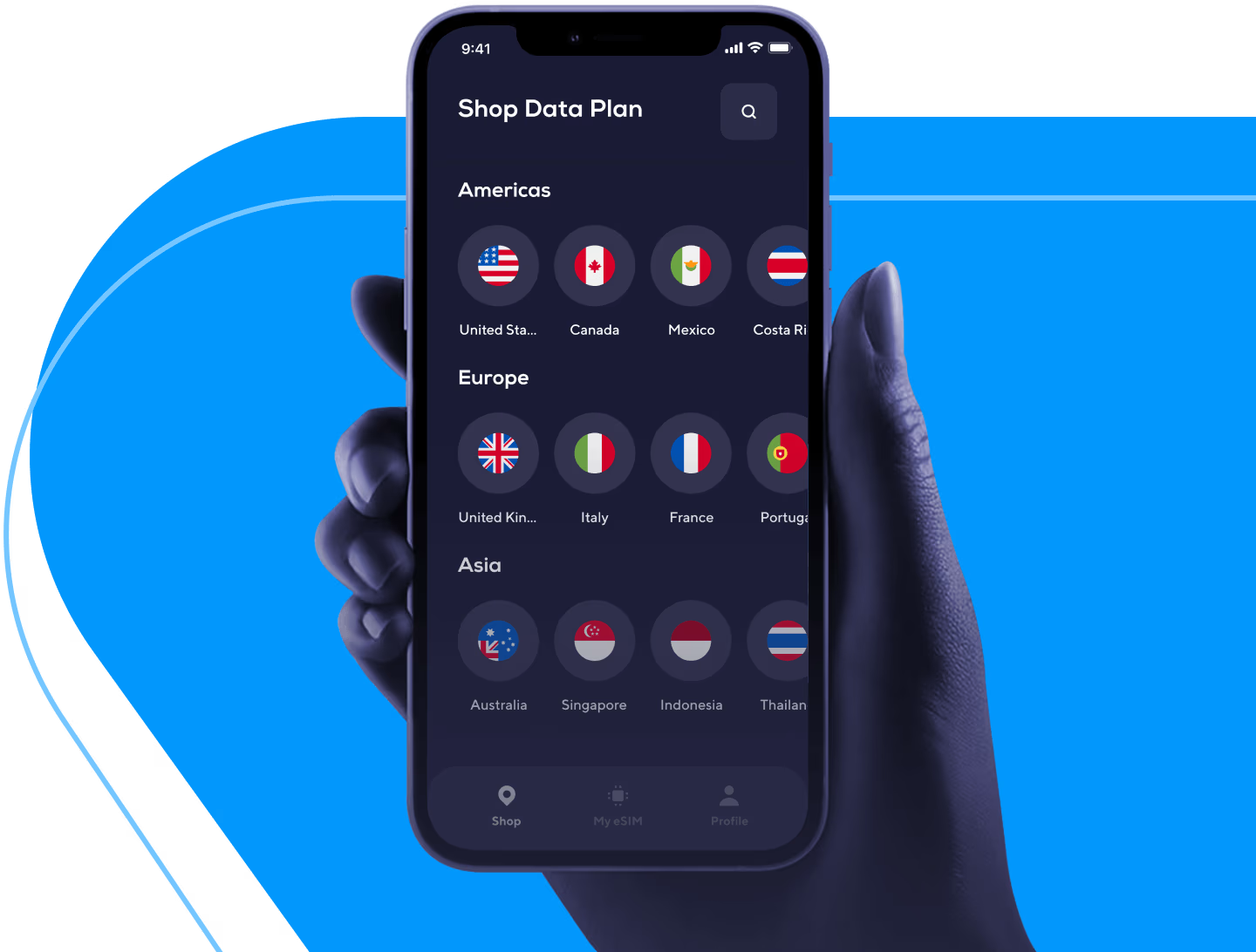
Travel eSIM Growth to Cut Operator Roaming Revenues by a Third by 2030
Global spending on roaming-related connectivity is on track to hit $16 billion in 2025, according to Counterpoint’s Global Retail Roaming Market Outlook 2025. This milestone underscores how international travel has not only rebounded to pre-pandemic levels but is now driving fresh growth in the connectivity ecosystem. In 2024 alone, the roaming market saw a robust 20% year-on-year increase, fueled by pent-up demand for cross-border travel and the resurgence of both leisure and business trips.
Yet, beneath this growth lies a fundamental shift in how travellers choose to stay connected abroad. Traditional roaming services, long dominated by incumbent mobile network operators (MNOs), are facing mounting disruption from low-cost travel eSIM providers. Since 2021, travel-focused mobile virtual network operators (MVNOs) have rapidly expanded their footprint, offering pre-departure digital connectivity, transparent pricing, and greater convenience compared to legacy roaming packages. This structural change points to a market that may stabilize in the near term but faces revenue pressure in the long run as eSIM adoption accelerates.
Commenting on the market dynamics, Research Analyst Siddhant Cally said,
“Travel eSIMs have disrupted the market by offering travellers convenient, digital-first, and cost-effective alternatives. However, adoption still faces barriers such as low awareness, complex KYC requirements, and regulatory hurdles, which may slow growth in certain regions.”
The growing penetration of eSIM-capable smartphones is expected to accelerate this transition. While eSIM-only devices remain limited for now, their wider adoption in the coming years is expected to significantly reduce the traditional practice of purchasing a SIM card on arrival. At the same time, digital-first MVNOs are aggressively marketing their offerings, challenging incumbents to rethink their strategies.
Mohit Agrawal, Research Director at Counterpoint, added:
“MNOs need to move beyond defending legacy roaming revenues and adopt proactive strategies against low-cost travel eSIM MVNOs. By targeting inbound travellers, leveraging their unique ability to bundle voice and SMS, or even launching sub-brands, operators can deliver offerings that go beyond price competition. The time is now for MNOs to get aggressive, differentiate, and protect their share of the travel connectivity market.”
Counterpoint highlights that travel remains the single largest use case for eSIM and is set for rapid growth. This momentum is underscored by global operators such as Vodafone launching independent travel eSIM apps for international users. Looking ahead, competition is expected to intensify across the travel ecosystem. Beyond MNOs and MVNOs, booking platforms, travel agencies, airlines, and other travel service providers are increasingly embedding travel eSIM offerings, enabled by advanced MVNA/MVNE (Mobile Virtual Network Aggregators/Mobile Virtual Network Enablers) offerings and white-label eSIM solution providers. This trend will further commoditize the product, making brand loyalty easier to shift and forcing providers to compete on pricing, partnerships, and customer experience. The result will likely be downward pressure on ARPU/ARPT (Average Revenue Per User/Average Revenue Per Trip), leading to sustained price erosion despite growing travel volumes.
Final thoughts
As the global travel‐connectivity market accelerates toward eSIM dominance, a few inevitable patterns are materializing — and which players will succeed seems increasingly clarified. What we’re seeing isn’t just a revenue shift: it’s a redefinition of business models and competitive moats.
First, disruption is coming from focused travel eSIM specialists—companies like Airalo, Holafly, Ubigi, Nomad and others. These providers are often leaner, digital‐native, and agile. Airalo’s marketplace model enables price transparency across 200+ countries, while Vodafone’s standalone travel eSIM still ties customers into its ecosystem. Holafly is pushing unlimited data in many countries, which appeals especially to long‐haul or heavy travellers. Nomad and Ubigi are blending global & regional plans, flexible durations, and subscription models in ways that edge into both business‐travel and leisure segments.
Meanwhile, traditional mobile network operators (MNOs) are being forced into a reactive posture. Many still rely heavily on legacy roaming revenues; yet, as eSIM‐capable devices proliferate and as consumer expectations shift (instant activation, transparency, ease of use), their competitive advantage is eroding. Vodafone and Orange are examples of operators that are launching travel eSIM or travel-focused offers, in part to stem the loss of roaming income. But their scale, legacy cost structures, regulatory baggage, and lower flexibility give specialists a head start. Digital-first players are leaner, more agile, and unencumbered by legacy roaming revenues, while incumbents like the already mentioned MNOs Vodafone and Orange are being forced into reactive strategies to defend market share.
Regional dynamics add nuance. Europe has emerged as a leader in adoption, thanks to regulatory backing and high penetration of compatible devices, while markets in Asia and Africa lag behind due to stricter KYC rules, patchy operator readiness, and limited handset availability. This uneven adoption underscores the need for tailored strategies rather than one-size-fits-all global offerings.
Big Tech remains the most powerful accelerant. Apple’s decision to launch eSIM-only iPhones in the US—and the expansion of that approach to Europe—represents the single most disruptive catalyst for mainstream adoption. Together with Google and Samsung, these device makers will shape consumer expectations and timelines more forcefully than operators themselves.
The enterprise segment is the next frontier. While much of the focus has been on leisure travellers, corporate travel programs and mobile workforce solutions may prove equally significant. Managed eSIM services offer enterprises seamless control, security, and predictable costs, potentially yielding more stable margins compared to the highly commoditized leisure segment.
Looking ahead, commoditization risks loom large. As white-label MVNE/MVNA platforms empower airlines, booking platforms, and travel agencies to embed eSIMs, brand loyalty will erode, and competition will converge on price and experience. In this landscape, winners will be those who differentiate through partnerships, frictionless activation, and value-added services rather than cost alone. The next three to five years will likely see both consolidation among smaller providers and more aggressive positioning from MNOs who cannot afford to remain passive.
From the competitive landscape:
- Pricing & product differentiation will increasingly matter. Players that can combine good coverage + reliable speed + predictable, affordable pricing will gain trust. Airalo and Ubigi seem well positioned here.
- User experience & activation friction is another battleground. KYC, regulation, and device compatibility all remain hurdles. Providers who streamline these will win.
- Strategic partnerships & bundling (with airlines, travel platforms, and tourism boards) will be key. MVNEs and white‐label platforms are making it easier for non‐traditional players to embed eSIM offers into upstream travel (think booking platforms, accommodation apps, etc.).
Looking ahead, we can expect:
- The growth in travel eSIM revenue to outpace that of legacy roaming, but the early years will show high growth yet still modest absolute numbers relative to global telecom revenues. Projections vary, but many reports (Juniper, Verified Market Research, HTF Intelligence, etc.) point to strong CAGR (often 8-12 %) from now through 2030+ for the travel eSIM segment.
- A risk of commoditization. As more providers enter, basic connectivity/digital data becomes less differentiable. The real long-term value will come from value-adds (bundled services, loyalty, voice/SMS plus data, global support, trust/security, maybe even privacy or guaranteed performance) rather than just low price.
- Possible regulatory and technical hurdles: device compatibility still isn’t universal; some markets have regulatory restrictions on cross-border eSIM activation, content routing, data security, etc. These could slow adoption in certain territories.
In conclusion, travel eSIM providers are the incipient winners in the travel‐roaming market shift. MNOs who fail to evolve risk being relegated to niche or legacy services. The marketplace winners will be those who not only offer cost advantages but also anticipate and reduce friction (activation, support, trust), build strategic partnerships, differentiate on experience, and scale efficiently. The coming 3-5 years will likely separate the handful of eSIM specialists who solidify strong brands and margin models from the many that will struggle in price competition or be acquired.
About Counterpoint Research
Counterpoint Research is a global market research firm specializing in products and services across the technology ecosystem. The company advises a diverse range of clients, including smartphone OEMs, chipmakers, channel players, and Big Tech, through offices located in major innovation hubs, manufacturing clusters, and commercial centers worldwide. Its analyst team, led by seasoned experts, works closely with stakeholders across the enterprise—from the C-suite to professionals in strategy, analyst relations (AR), market intelligence (MI), business intelligence (BI), product, and marketing—to deliver market data, industry thought leadership, and consulting services.











